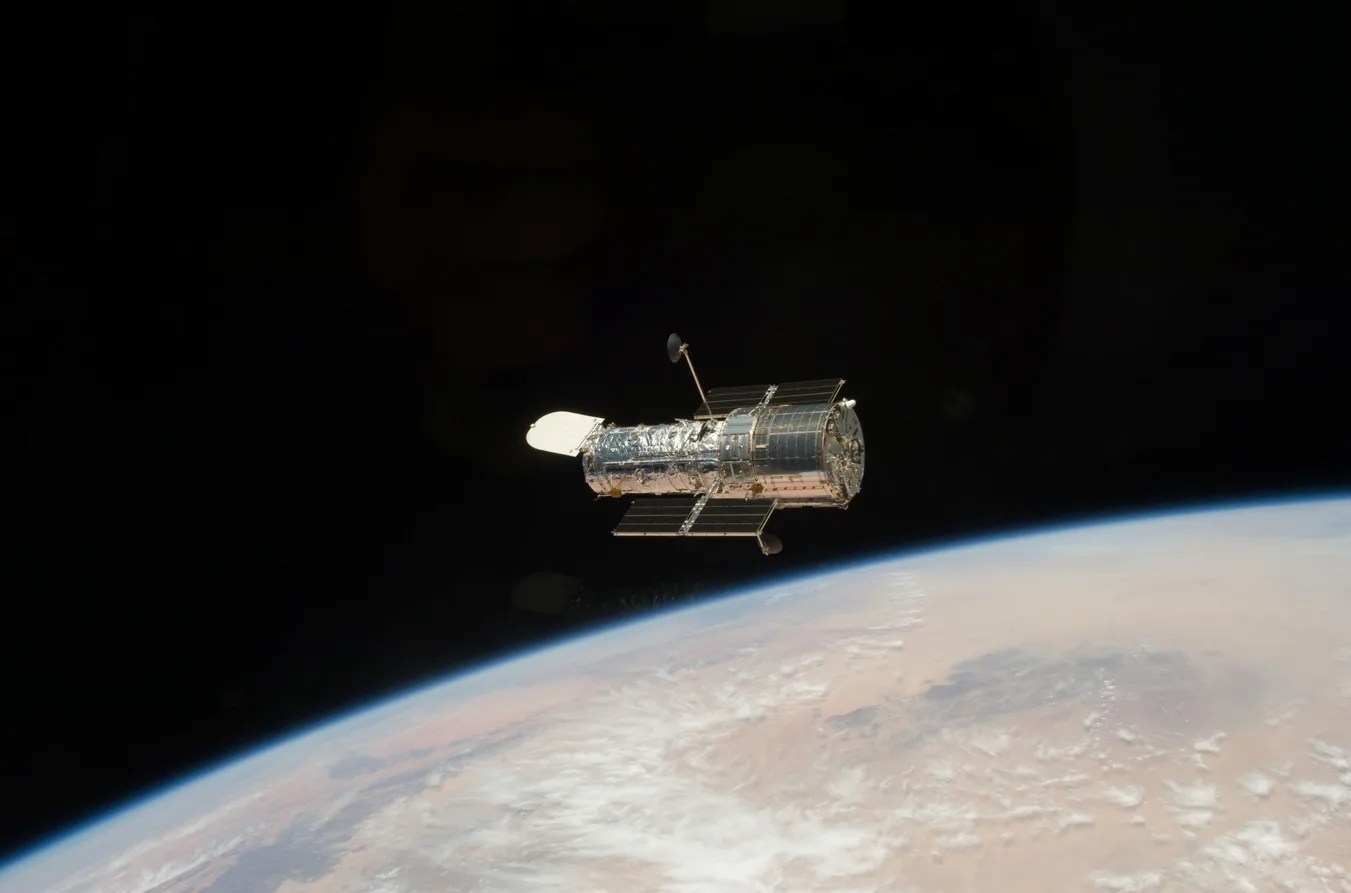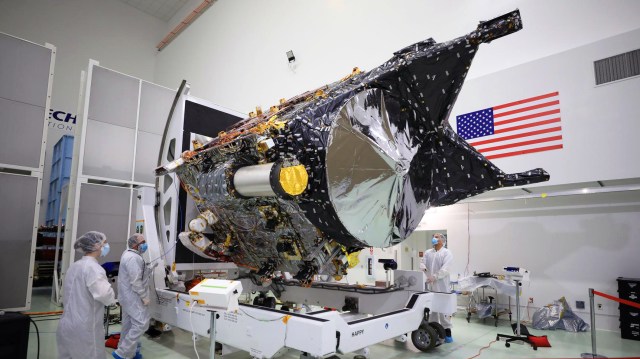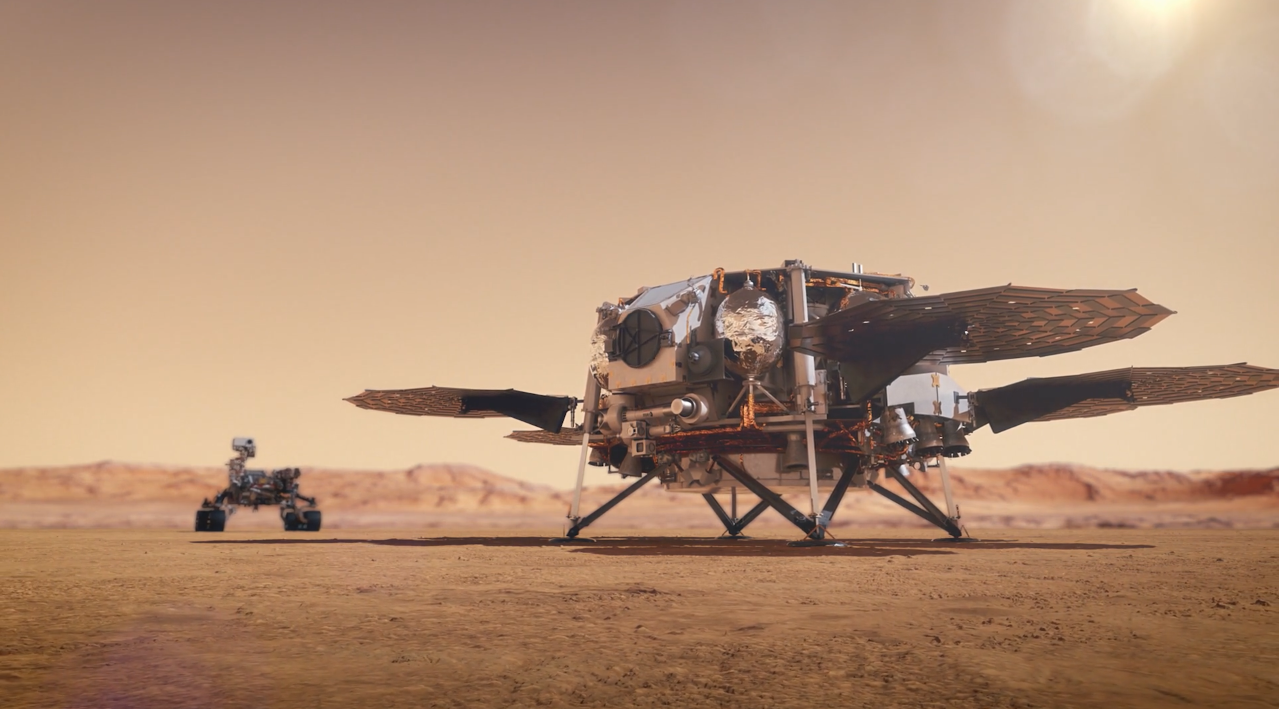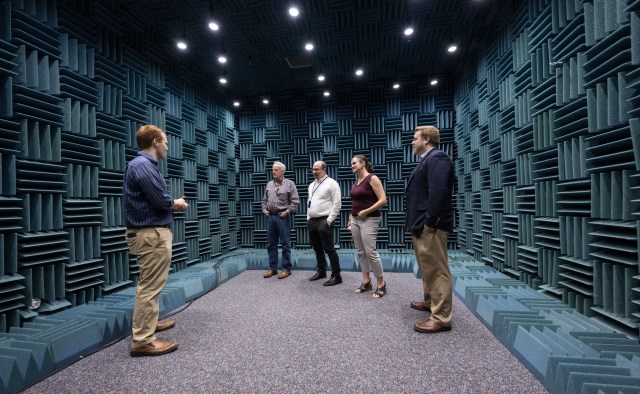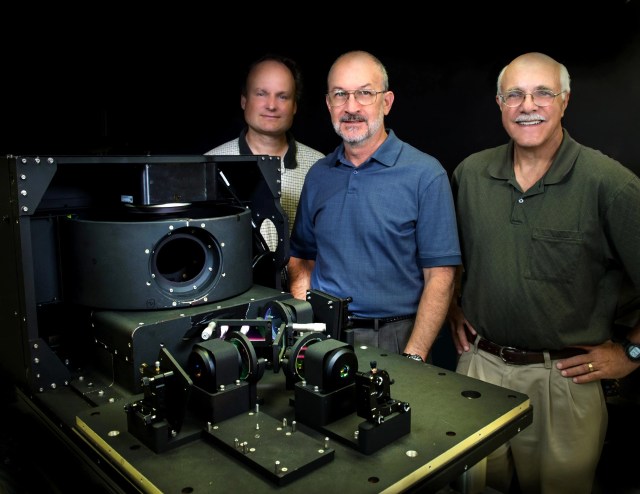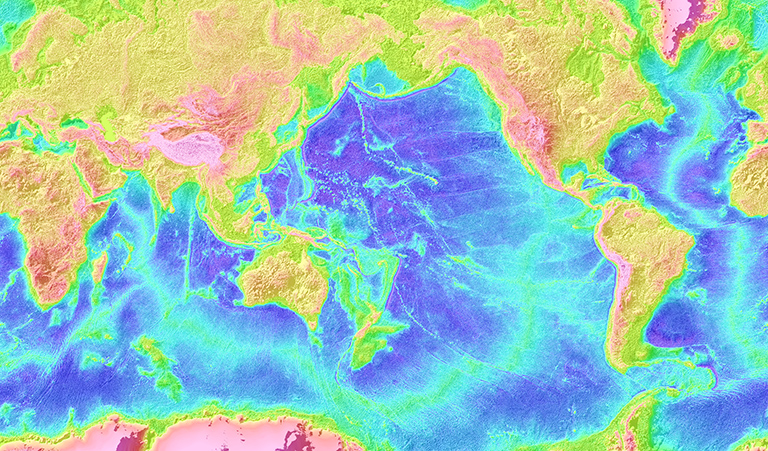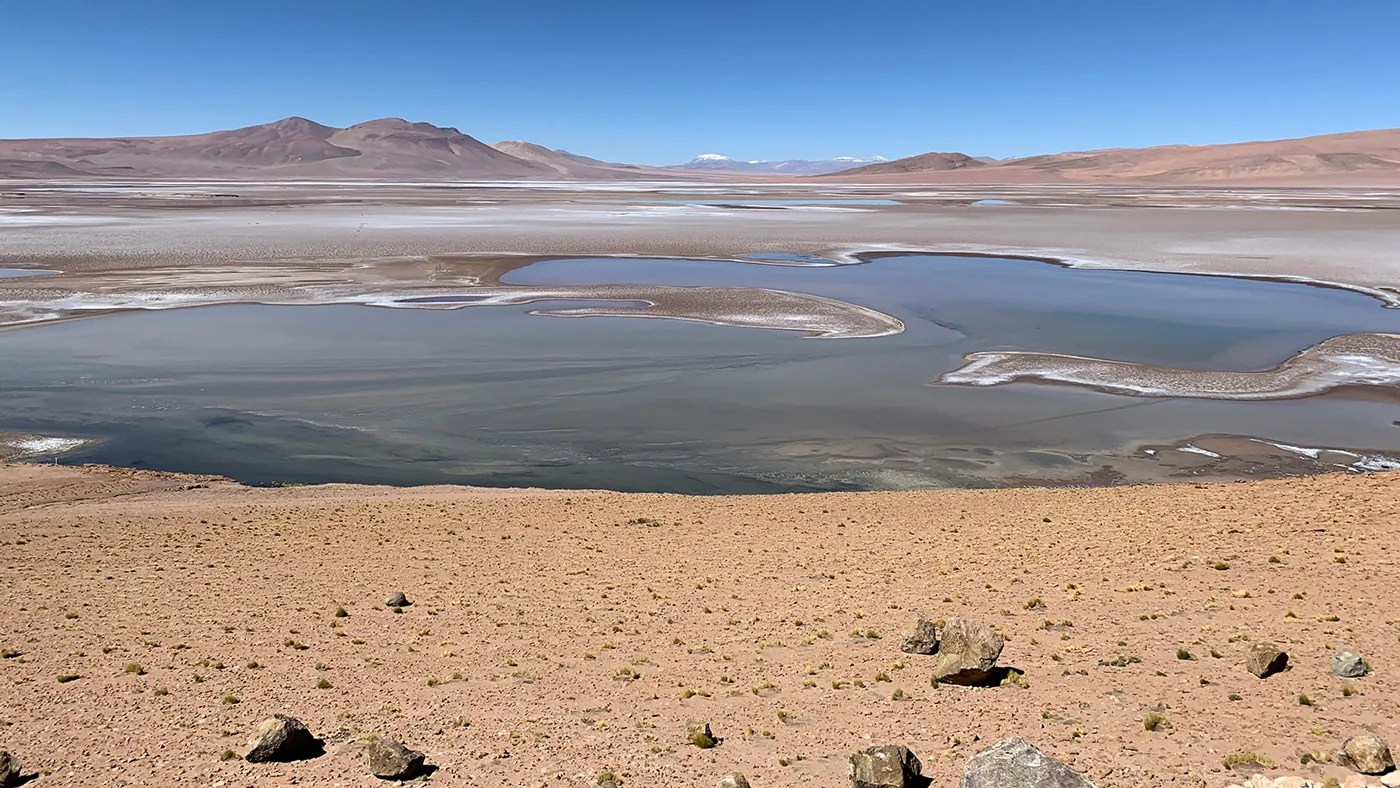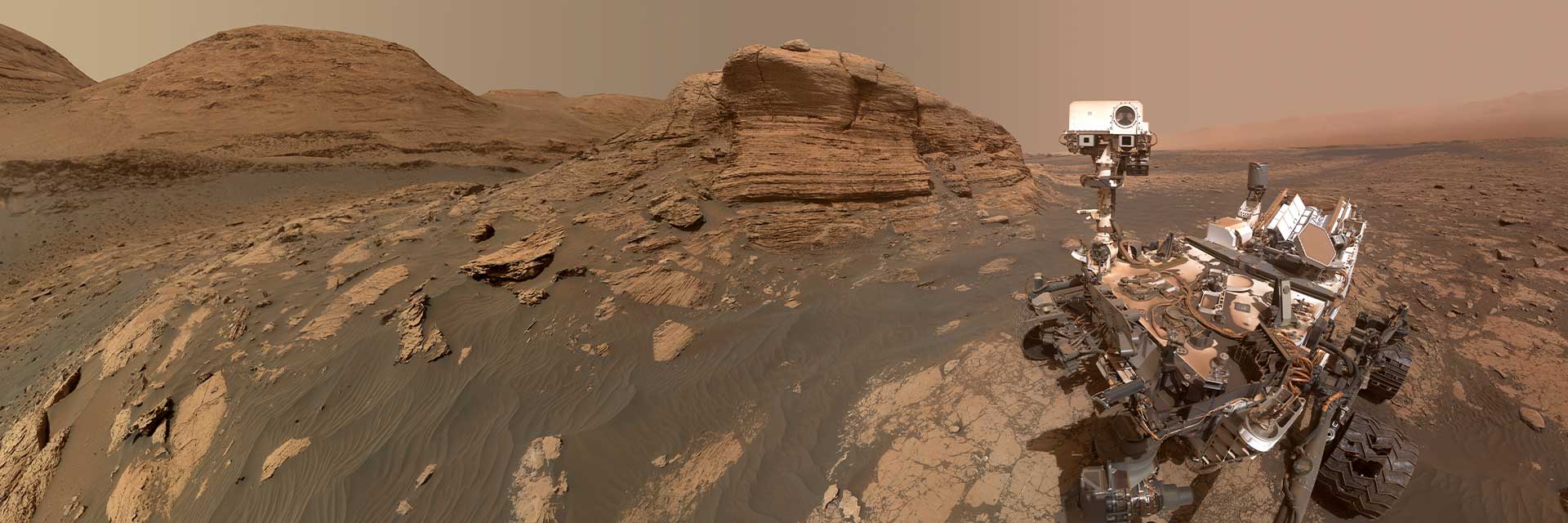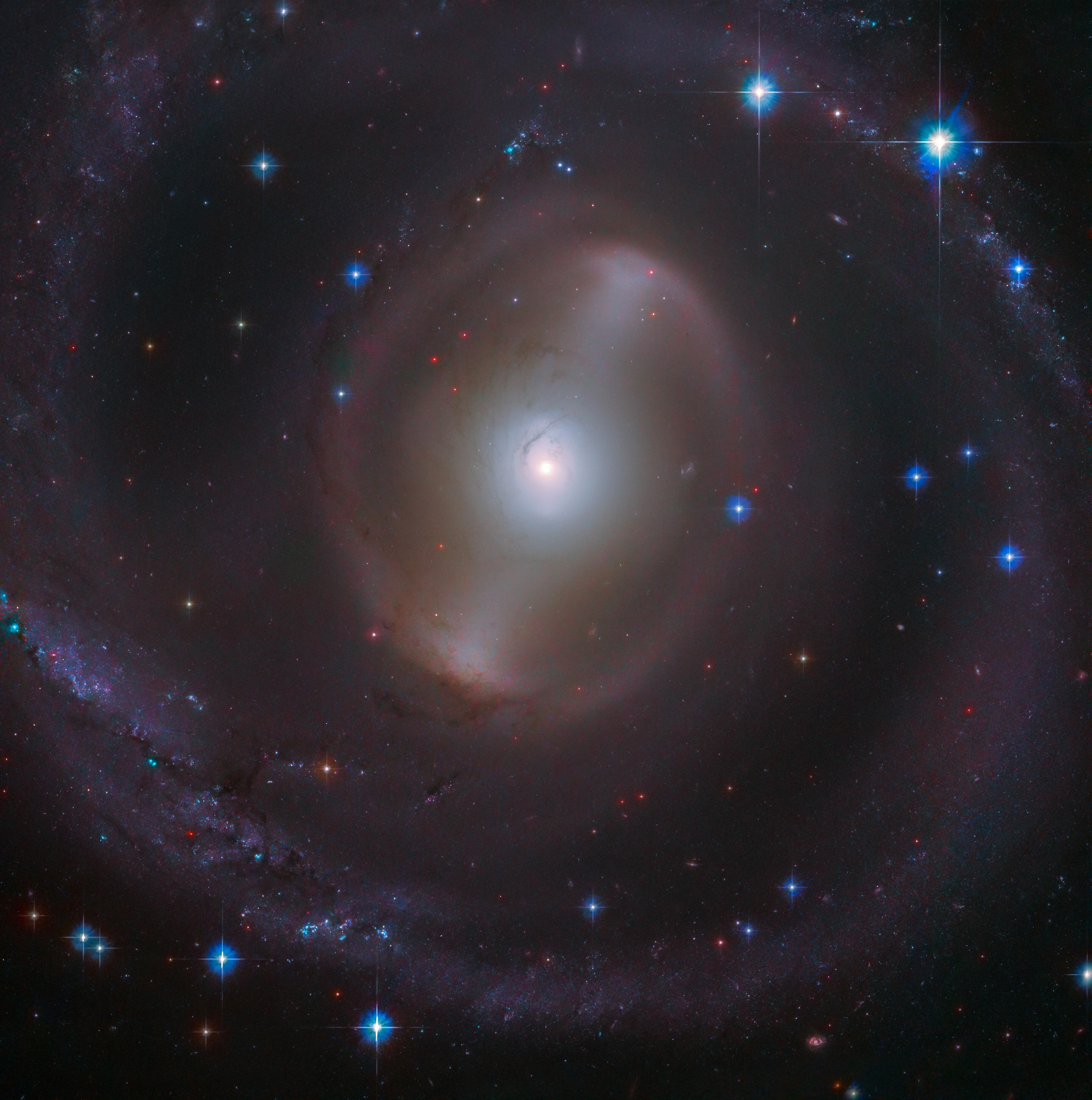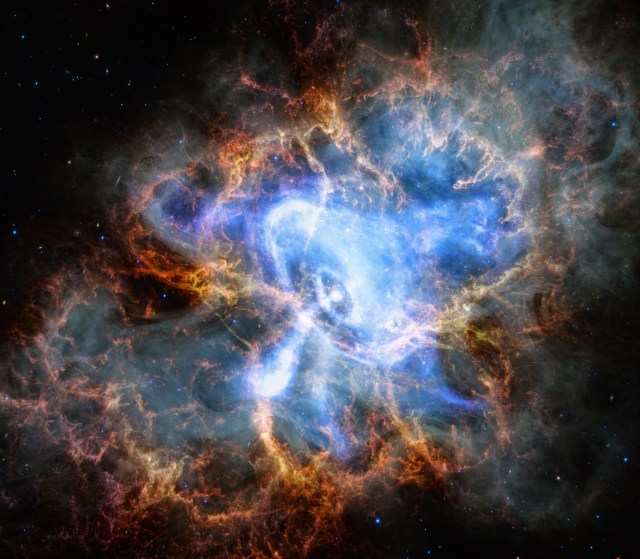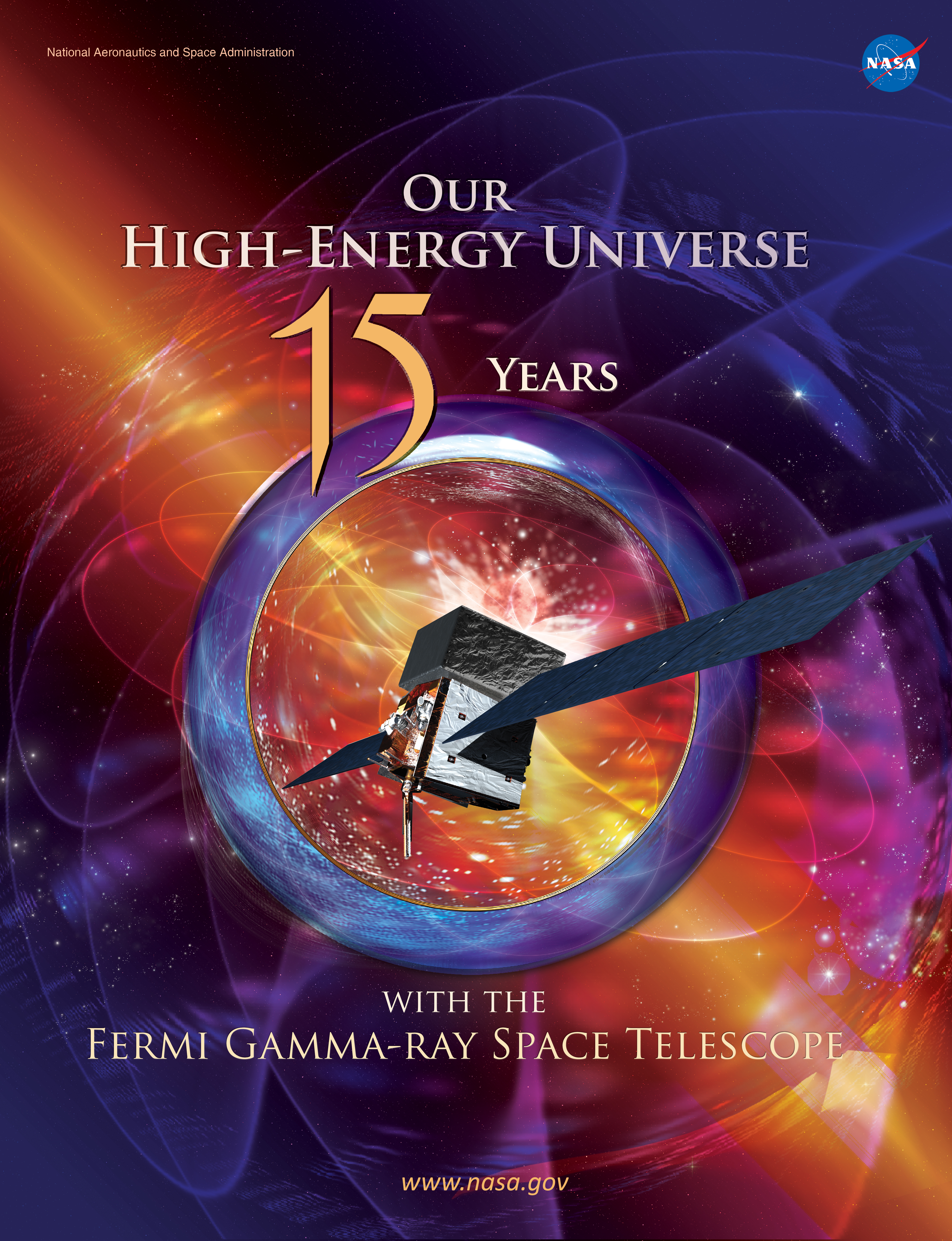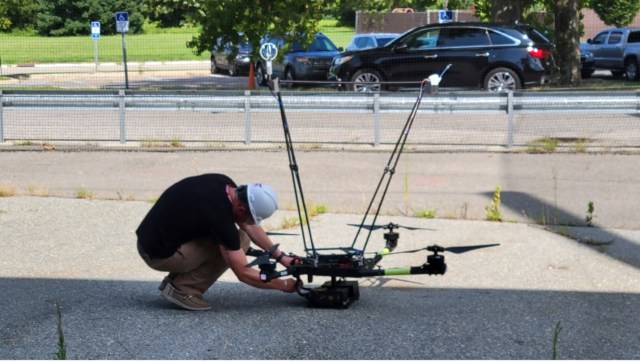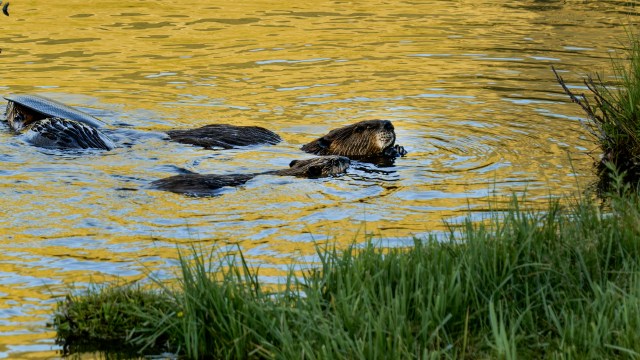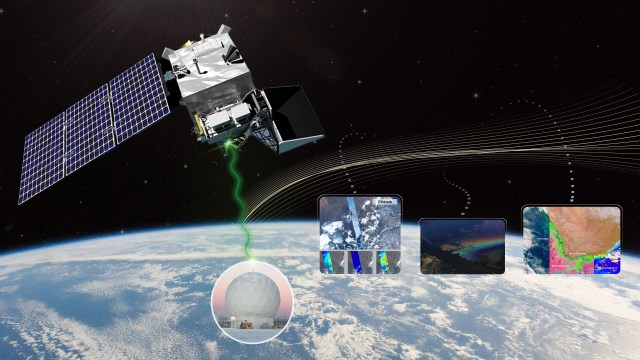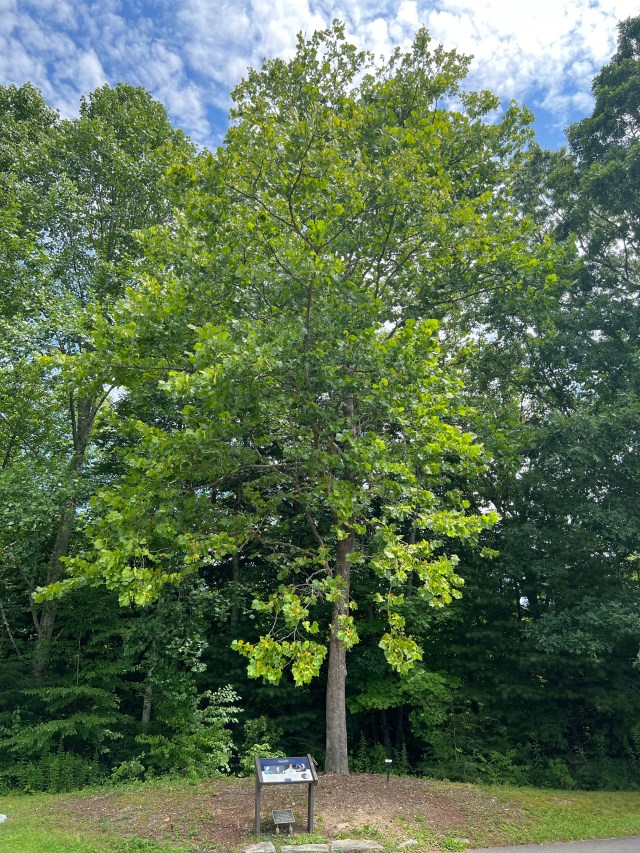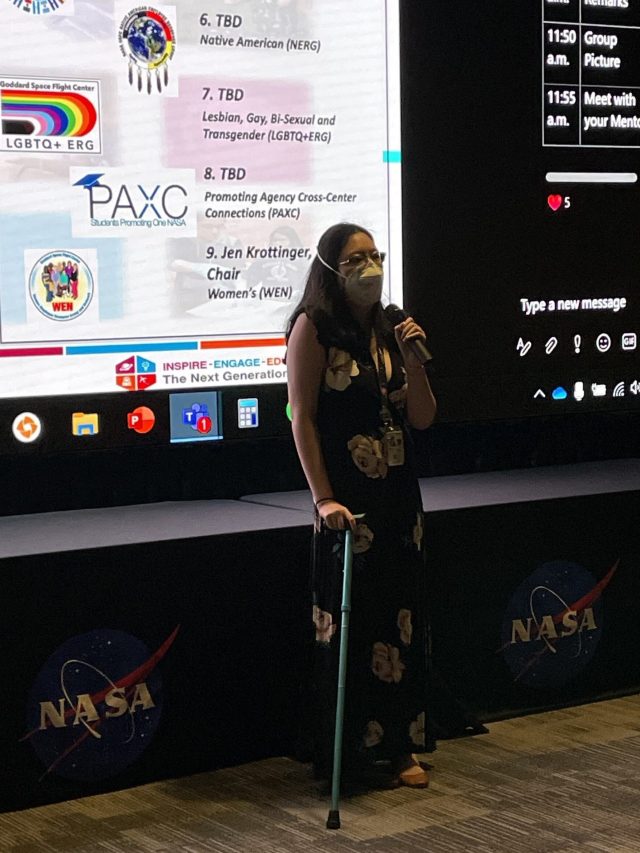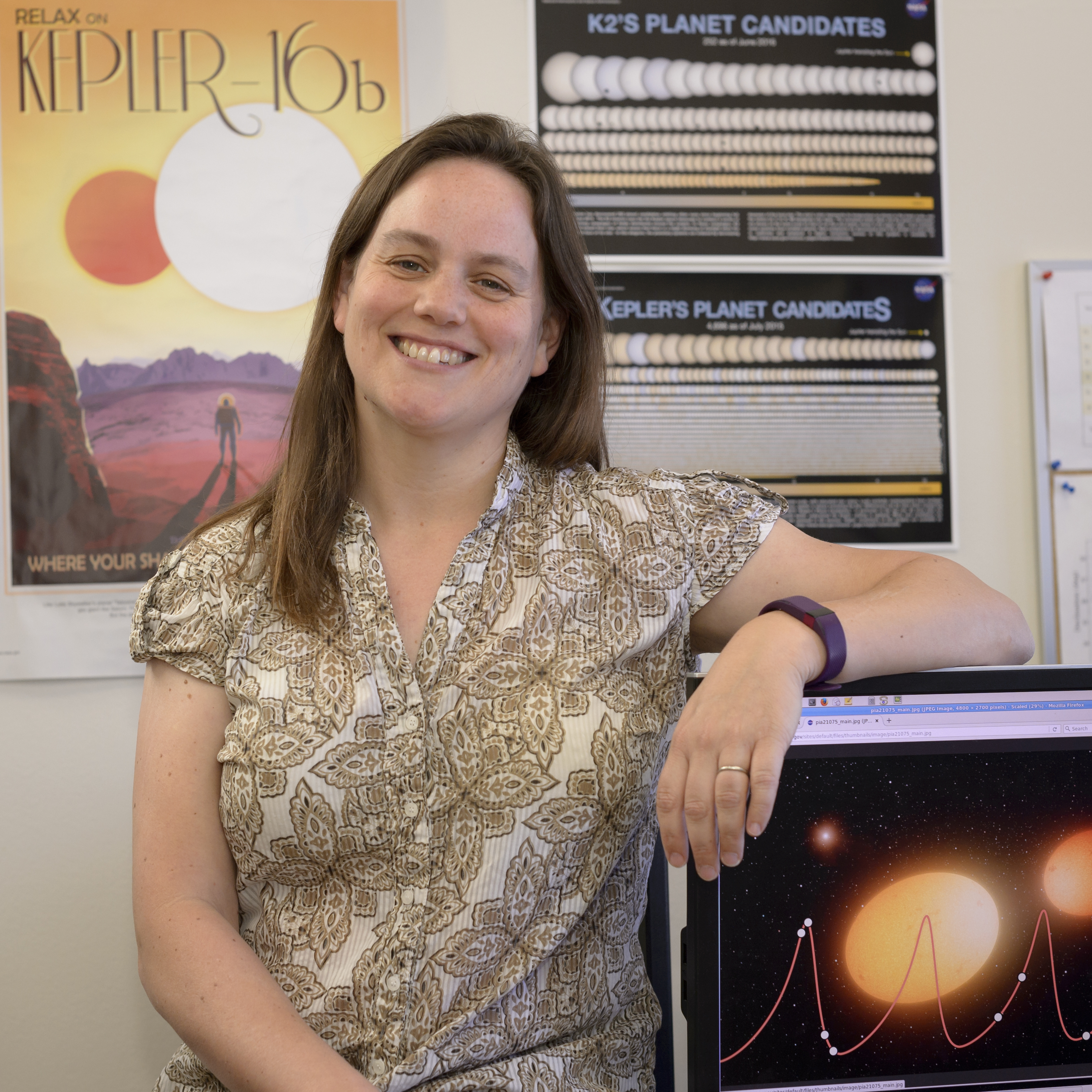
A conversation with Susan Thompson, Kepler research scientist for the SETI Institute at NASA’s Ames Research Center in Silicon Valley. For more information on the Kepler Exoplanet Week, visit https://www.nasa.gov/kepler/exoplanetweek.
Transcript
Matthew Buffington (Host): You are listening to NASA in Silicon Valley, episode 45. Today we are speaking with Susan Thompson, who is an Ames and SETI Institute scientist featured in a NASA press conference today announcing the latest planet catalog from NASA’s planet-hunting mission. All this week, NASA’s Ames Research Center in Silicon Valley is hosting a scientific conference for Kepler and K2 researchers. In addition, partner organizations across the Bay Area are hosting public events that you can attend, so check out the show notes for a link to information about the Kepler Exoplanet Week activities. In the meantime, here is Susan Thompson.
[Music]
Host: We love starting it off with like tell us a little bit about yourself. How did you join NASA? How did you end up in the Bay Area, in Silicon Valley?
Susan Thompson: Wow, yeah. I got my Ph.D. in astronomy from North Carolina. So I’ve kind of lived all over the place. I grew up in Wisconsin. Then I did my Midwest, Hanover College undergraduate, and decided, “No, astronomy is the thing for me,” and I ended up at North Carolina. Then I decided I wanted to teach.
Host: Really?
Susan Thompson: So I went to be a professor and I taught for three years as visiting professor at the Colorado College.
Host: Okay.
Susan Thompson: And so I moved to Colorado.
Host: So you get all the time zones. You got Central, Eastern, Mountain.
Susan Thompson: Yeah, I pretty much have lived in every time zone, that’s absolutely true. From there, I decided, “You know what, I miss research. I want to know more about these stars I’m working on,” and ended up working for this great collaboration called the Whole Earth Telescope, which is being run out of the University of Delaware. And so this is a collaboration of 20 telescopes around the world that try to get time series data of one star at a time. So they look at one star per month and just try to see if it gets brighter and dimmer and brighter and dimmer, and from that we learn the structure of the star, et cetera.
But from there it was like, “Well, I need a real job now.” Just around that same time, Kepler was coming online. What does Kepler do, but time series photometry of stars, but not just one star – hundreds of thousands of stars. And so I said, “I think I could do that job.” And so I applied for it and got it. And so that’s what brought me to the Bay Area was to work on Kepler.
Host: I’m imagining growing up in Wisconsin, was it a lot of staring up at the sky wondering about the stars? Were you always like a NASA nerd kind of like getting into it?
Susan Thompson: Well, I did live way out in the suburbs, so I was able to lie in my front yard. Once, I even saw the Andromeda Galaxy from that.
Host: Wow.
Susan Thompson: But I would be able to go out every night and say, “There’s Mars.” That’s when I learned about retrograde motion. My dad took me out to see Haley’s comet when it came around. So yes, I was an astronomy nerd from a very young age. The first CV, or I guess resume, I ever had to make in high school, it said you had to list your goals at the top, and I said, “I want to work for NASA.”
Host: Nice.
Susan Thompson: So this is actually, in some ways, like living the dream.
Host: I grew up in Ohio. You go into the Midwest, somewhere it’s like no light pollution.
Susan Thompson: Yep, absolutely.
Host: We had an astronomy club and you go way out in the middle of nowhere in some cornfields and you could see everything.
Susan Thompson: Yeah, there are days I really miss that because we do not have it here in the Bay Area.
Host: Nope. It’s a lot of light pollution.
Susan Thompson: A lot of light.
Host: Got to get up into the mountains in order to see stuff.
Susan Thompson: Yeah, go out to Yosemite. Great skies there.
Host: So when you came out here, it was literally just to work on Kepler.
Susan Thompson: Yep.
Host: What exactly are you doing with Kepler? Are you looking at all the information as it comes in, sorting that out? How does your role fit in?
Susan Thompson: Well, my role initially was to get all the archive products together. Kepler collects a lot of data. We observe 180,000 stars every half an hour, and we did that four 4 years. We weren’t going to be able to go through all that data and get all the cool science out of it, so we had to make sure everybody else could get at it as well. And so that’s where I came into play. I needed to organize it and make sure people could get to our results, understand the things that we understood about it, and make sure they could get at the data and do their science.
And so I did lots of weird technical things like “Should we call this period with a capital P or a lowercase p? It sounds very interesting that way.” I did a lot of that. I also helped understand what some of the noise sources in our data were. And then this last project I’m working on has been actually trying to catalogue some of the planets we’ve been finding.
Host: And so I heard that, a handful of times from talking to different Kepler folks, of a catalogue of data or the archive. Does this happen throughout the mission cycle of the primary mission of Kepler? Is it like, “All right, here’s a cache of a whole bunch of information,” and you give that out to the public or to scientists? How does that divide up? How do you work that out?
Susan Thompson: Well, Kepler downloads data about every three months when it was taking data for the original Kepler mission. And so we tried to release it, I guess, within six months of it coming out. It was process data, but all it all was the brightness of these stars every half an hour, those measurements so other people could get their results. Then we also did a search for our transiting signals for our transiting exoplanets, and we had to catalog those as well. So that was more of a list of, “Here are interesting signals we have found in the data.”
Host: Okay. I’d imagine over the life cycle of the mission, you get the first what you suspect would be a transit of a whole bunch of stars. But then if you see those blips pop up again two years, three years, four years after.
Susan Thompson: That’s right. First, we searched just the first-year data, and then we searched two years of data, and then we searched three years of data. Some of the things we found in two years of data, they were great planets, wonderful. But some of the things that were smaller signals when we searched longer datasets, they disappeared and we were a little sad. That happens from time to time.
But we knew that. We knew some of the things we’re reporting as “candidates.” There’s a reason why we call them planet candidates, and that’s one of the reasons is we know that sometimes we get a little fooled by the noise. And so it was nice to get even longer datasets.
Host: And so it’s not just like, “Hey, it took a whole bunch of data in those first three months, you get it, you send it out, and then you get more data and send it out.” It’s like you’re constantly comparing the most recent data to that series to the archive and to the rest of the catalog to see how it matches up.
Susan Thompson: Yeah, we do. We look to see how they’re connected to the previous data we had sent out and our previous results, seeing how we can improve upon what we’ve done before as well.
Host: And so for the folks listening, this is an interesting, fun week or month for Kepler, especially looking at June of 2017. But talk a little bit about just the general Kepler world of looking up into the stars, every star having a planet. What exactly is it that Kepler confirmed?
Susan Thompson: Yeah, Kepler was looking for transiting exoplanets. We’re looking for that time when the planets pass in front of the star so we can tell that a planet is there. As it has done this, it has collected more than 4,000 candidate planets. We’ve confirmed, which means we’ve ruled out that these dips in the brightness are really due to planets. So we’ve confirmed 2,300 of them. This is more planets than anybody else has found from any other mission or collection of telescopes. So it has been profound to people who are doing planets around other stars. Kepler does not create pretty pictures. Honestly, you can take a CCD camera that you would take from your cellphone or something and we stuck it on a telescope. You look at these pictures and the stars are these blocks.
Host: It’s just like a pixel.
Susan Thompson: It’s just like a pixel. One star will lie on maybe on pixel or maybe on 10 pixels. But that’s it, we’re just looking at stars. Because all we’re trying to do is collect how bright the star is. We are not trying to take pretty pictures of galaxies.
Host: Okay.
Susan Thompson: We want to get an accurate measure of how bright it is. Because when a planet passes in front of the star, it changes in brightness, but not by a lot.
Host: How do you measure that? How can you measure that brightness of that star?
Susan Thompson: Imagine a bucket.
Host: Okay.
Susan Thompson: Seriously, you’re just throwing light into this bucket for 30 minutes as I collect it, and then I put a lid on it, and then I go and weigh the bucket, if light had mass.
Host: Yes, of course.
Susan Thompson: If you weigh it and you said, “That’s how bright it was in that half an hour.”
Host: Okay.
Susan Thompson: Okay? And then you just do that every half an hour.
Host: Okay.
Susan Thompson:And then if the light decreases, you’ll discover that your bucket is slightly lighter.
Host: These are like miniscule movements. It’s like a super white pixel, then slightly less white.
Susan Thompson: Yeah, you’re not going to even see. If you looked at like a movie of this star, you wouldn’t notice it changing in brightness. You really have to do the measurements and count them up. Because an Earth, for instance, passing in front of a star is like a hundred parts per million. That’s what we’re looking for. That’s the decrease in flux we’re look for. That’s 0.01 percent.
Host: And so talk a little bit about the planets. Because not only are you seeing that, yes, a planet exists that is transiting, but you can get a little bit more information. You can get into is it an Earth-size planet, how far away is it from the star…
Susan Thompson: Yeah, from doing transiting surveys of exoplanets, what you can measure is its period and how big it is. That’s pretty much the two things we have. From the period of the orbit using Kepler’s law, we can get how far away it is from its star. So we actually know how far away it is and we know how big it is.
Host: Okay.
Susan Thompson: From that, we’re inferring everything else. We kind of infer that if something comes out to be about the size of the Earth, that it’s probably a rocky planet kind of like the Earth. If we find things are the size of Jupiter, then they’re probably puffy, gaseous things like Jupiter. Now if you have something like a Jupiter planet, there are other measurements that people can take to start to confirm the mass of the planet as well. But that doesn’t come from Kepler alone. We have to collaborate with our other astronomer friends and get them to take other data for us.
Host: Yeah, that’s why you have other space telescopes, land-based telescopes, more data points looking at the same location.
Susan Thompson: That’s right. So we get more data, and that’ll tell us more about the planets.
Host: And so when you’re looking at whether or not a planet that is like an exoplanet, whether it’s Earth-size or not, it also matters like that distance away. But I’d imagine that has to do with how bright is that star burning, I guess, because then that would help dictate what that Goldilocks – not too hot, not too cold – the Goldilocks zone.
Susan Thompson: Yeah, you’re getting into the Goldilocks zone, or the habitable zone as we like to call it. So what it’s like on the surface of that planet is going to have a lot to do with what the star is like.
Host: Okay.
Susan Thompson: Right? If you’re around a cool star, because we have cool stars and we have hot stars and we have stars like our sun which are kind of in-between. So if you have like a small, cool star, and you were in a one-year orbit around that, you would find it to be a very chilly place. You wouldn’t necessarily want to live there.
Host: Yeah.
Susan Thompson: It’d be ice and cold everywhere. But if you moved into an orbit that was maybe 20 days or so, then you’d find it to be very temperate, something very nice. Go to the beach, have a nice day. But that’s just one factor that determines what it’s like on your planet.
One thing we frequently get confused when we’re talking about planets is that we have this habitable zone, and it gives us this impression that if something is in this habitable zone then it’s definitely habitable.
Host: We’re totally good.
Susan Thompson: Yeah, but there’s so much more we can know about these planets. We have no idea what the surface is made of. We don’t know what the atmosphere is made of or even how thick the atmosphere is, if there’s water on the planet. So these are things that are going to be for the next NASA missions to figure out. Right now, we’re just trying to count how many are there and what types they are.
Host: And so right now, it’s like it’s literally gathering all the information, all that data, and then getting that out for people to look at it and see what they can learn from it.
Susan Thompson: Right.
Host: It’s interesting because it’s not just NASA looking at it, it’s the public to a large extent.
Susan Thompson: The public is looking at it, lots of scientists around the world are looking at this data, which is why it was so important to get it organized in a way everybody could use. I didn’t want them to come and ask me for every question they have about the data.
Host: Yeah, I keep hearing it referred to as a survey. You’re almost looking at the demographics of a star.
Susan Thompson: It’s more we’re doing the demographics of planets around other stars.
Host: Yes, that’s right, yeah.
Susan Thompson: That’s what we’re doing. Yeah, we’re trying to figure out what types of planets are most common out there. And eventually people hope to figure out then how common are planets that are kind of like the Earth.
Host: Speaking about that, then what are some of the things that have surprised you? Are there some types of planets that are a little bit more common? I don’t know, anything that seemed interesting?
Susan Thompson: One of the most surprising things, that there’s a lot of planets that appear to be nothing like our planet Earth or like any other planet in our solar system. We have a bunch that are somewhere between Neptunes and between Earths that are maybe to three Earth radii. This is the most common kind of planet that Kepler has found, but we don’t seem to have one like this in our solar system. It’s a bit of a mystery to us exactly what this planet would be like. So that’s one of the unusual things we found with Kepler.
We’ve also found planets around bizarre stars like binary systems, which is one of the coolest finds we’ve ever found. The first one, Kepler-16, is a binary star, and they actually were able to find an exoplanet going around the binary star, which means planets can form around binary stars. And it’s not the only one. They have now found dozens of these.
Host: I’d imagine that transit has to be weird around a binary.
Susan Thompson: It’s hard to find. It’s almost impossible to find. The way we look for planets normally is we look for a super periodic event. If it happens and it happens again 10 days later and again 10 days later, it’s easy to see because you know where to go look. But in this case, it’s harder to figure out where to go look because sometimes it’s passing in front of one of the stars, and then sometimes it’s passing in front of another of the stars. And those two stars are moving around each other as well, and they’re eclipsing each other, so they’re blocking each other’s light as well.
There’s a lot going on in this photometric time series of that data. And so to go through it and find a transit is a lot of work. I think seriously the first few they really did just find by hand. They just scanned through the light curves looking for them.
Host: And so even on these binaries, are the stars actually really close? Like from our eye, they would look like it’s just one point, or do they tend to be a little bit further away? How does that work?
Susan Thompson: These binary stars, they’re so far away and the binary is actually a very tight binary that it looks like one star to us.
Host: Okay.
Susan Thompson: The only reason we know they’re binaries is that they’re passing in front of each other, so they’re blocking each other’s light in what we call an eclipse.
Host: Gathering this data, putting into the catalog, how does that play out for your day-to-day? You’re coming in, you get your coffee, you’re sitting down at your desk, you have your laptop, you’re like, “I’m going to go hunting for exoplanets.” How does Susan’s day-to-day go?
Susan Thompson: How does my day-to-day go. My day-to-day is more of a, “All right, here is my list of possible exoplanets.” We hunted through 34,000 possible events that came out. Kepler did this big search and came up with 34,000 possible events. And we had to go through that and whittle it down to what appears to be about 4,000.
Host: Okay.
Susan Thompson: I didn’t do this by looking at each individual one, though we used to do it that way. Day-by-day we’d go in. We seriously would have days where we would go and just look at plots. Someone would generate thousands of plots, and you’d walk in and you go, “Looks like a transit. Looks like a transit. Looks like a variable star.” You know what it mean? It was like, “Junk, junk, variable star, planet.” It would be like that. We stopped doing it that way.
Host: Okay.
Susan Thompson: This was too much effort.
Host: Taking a long time.
Susan Thompson: And it was too inconsistent. My day-to-day for a long time was thinking of ways that, “Why did I decided this one was a planet and this one was not a planet?”
Host: Okay.
Susan Thompson: What properties was I looking at to distinguish them from each other. We designed algorithms, basically.
Host: I was going to say, some autonomous way to do it. Yeah.
Susan Thompson: Yeah, that separated them too. We also designed ways of injecting signals into our data so that we knew that once we created this algorithm that it should find all of these injected transits. We found ways of simulating our noise, and we tried to figure out ways to be sure that those same algorithms would remove that noise and so we could balance them that way.
One day I’d walk in and go, “Okay, I’m supposed to work on this algorithm. It’s not separating things as well as it should. How can I tweak it to make it better?” And so there was a lot of things like that. These days it’s a lot more of writing up. I sit at my computer and type up what we’ve done because we’re almost done.
Host: Okay. Yeah, because it’s like the primary mission finished. But that primary mission when that was over, are you still downloading data from that primary mission or is it just sifting through it trying to organize it?
Susan Thompson: No. Right. We stopped taking data for this primary mission. We were looking at a field in Cygnus, called the Cygnus Field sometimes. And so that data stopped being collected in 2014. We’ve been working on this same dataset for three years now.
Host: Wow. I imagine before you were doing the algorithm you were just looking at different time periods like, “Number one, number two. Is it brighter, is it less brighter?” I wouldn’t even know how. How do you even do that?
Susan Thompson: We have code that actually goes through and can plot up what we call a light curve. Shows you the brightness versus time. I look at a lot of plots. I plot things up and I scan through them. But since we had the Kepler pipeline, as we call it, it did all the searching for us. It even told us where to go looking. It gave us the period of the planets and where in these light curves to go looking for the transits.
Host: Okay.
Susan Thompson: I had that as well. So I just say, “Okay, show me this possible candidate,” and it would show me the light curve centered around where I expected the transit to be. So a lot of looking at the data was looking at those transits and saying, “Yeah, indeed that has the shape that I would expect if it was a planet passing in front of a star.”
Host: I’d imagine that even before Kepler was launched and got sent out, and they decided, “This is the patch of sky that we want to look at,” all of that was based on science and taking the best logical guess of what would be an interesting location in the sky. But then I’d imagine all the information that you got now, that’s helping to perfect whether it’s TESS or like the James Webb Telescope, I don’t know, it calls out the interesting stars, exoplanets and possibilities so they all kind of build.
Susan Thompson: So Kepler, we specifically tried to look at stars that were kind of like our sun. That was what we were trying to do. They picked a part of the sky where there was lots of stars, but not too many stars. We wanted to be only slightly confused with each other, because two stars sometimes end up in the same line of sight and then you get them confused. We didn’t want that to happen too much. So we came out just outside the galactic plane, and we tried to pick a place where we could find lots of sun-like stars.
The great thing about TESS coming up is that it’s going to do the whole sky. It’s going to do everything that’s bright. It’s a completely different survey in that way. It’s going to find planets around really bright stars, around nearby stars. This is not something that Kepler could do. It did a little bit of that, but it’s not a full survey for those kinds of planets.
Host: Also, in fairness, it’s like people suspected the exoplanets were a thing, but it wasn’t until Kepler to really confirm that.
Susan Thompson: Right. Now we know that TESS is going to find a lot of planets. Going into Kepler, people were saying, “Well, there’s lots of hot Jupiters out there, but for all we know, Earth-like planets are rare. It’s hard to say.” They had some guess but they didn’t really know. Now that they’ve done the search, we’ve realized there’s a lot of planets out there. And so I’m really excited to see what TESS is going to find because they’re looking at pretty much every star that you can see with your eye and then some. From there, they’re going to find a lot of planets, and I just hope they’re ready for all that data.
Host: I think back to the beginning when you were talking about growing up in Wisconsin, going to North Carolina for school, being in Boulder. It’s like the textbooks that you used for your astronomy classes have been, for the most part, not rewritten completely, but you’ve added more chapters. The Kepler mission has added new chapters to what people learn.
Susan Thompson: Absolutely. Yes, yes.
Host: It’s got to blow your mind. You’re literally in the forefront of where the science is going.
Susan Thompson: Yeah, it’s a cool experience to be able to open up an astronomy textbook and realize that you know more than what the textbook is telling you. It was one of those moments where I said, “Wow. Yeah, I’ve reached that level.” Because I frequently still think of myself as a 25-year-old who knows nothing, which is why science is fun to do. Right?
Host: Yes.
Susan Thompson: You can just sit there and say, “I can go play with toys. I know nothing. I’m going to go find out things.” But it is also true that, yeah, I know more than some of the textbooks.
Host: And so stepping back then, how many planets is it now that has been confirmed? You can estimate it more or less, give or take.
Susan Thompson: People always want to know how many planets there are.
Host: I know.
Susan Thompson: They love numbers, hard numbers. The problem is, is that science is a bit messy. They come and they go.
Host: Yeah, a candidate.
Susan Thompson: We have a lot of candidates.
Host: Yes, that’s right.
Susan Thompson: The catalog we’re putting out right now I can tell you has 4,034 candidates in it.
Host: Okay.
Susan Thompson: Not all of them are going to end up being planets.
Host: Okay.
Susan Thompson: Certainly, through the search we missed a few planets, I know this to be true. And so it’s a good number to have because you can say, “This is my catalog,” but I also know that there’s a few places where noise is still getting in the way.
But what’s really cool about this catalog is actually we’ve accounted for our noise. We’ve never done this before. And so people who are just trying to count how many planets are actually there can say, “Well, Susan tells me that we’ve overcounted this type of planet by five percent, so I can subtract that off if I’m counting planets.”
And so the catalog we’re putting out now is really good for counting planets. It didn’t add a lot; it’s like 210 new planets. “210 new planets, that’s not that much, because we already found 4,000 of them.” So it seems like it’s not very much. Though honestly, 210 was still a lot for most people’s surveys.
Host: This is the last catalog. Right?
Susan Thompson: This is the last time Kepler from NASA is going to produce a large catalog, though we still have a cleanup catalog that’s going to come after this. So calling it the last catalog feels a little too final. People are going to continue to work on this. And so it’s just the latest catalog.
Host: Yes, and when is this catalog coming out?
Susan Thompson: The paper is currently being written.
Host: Nice.
Susan Thompson: The catalog itself is entirely available to everybody right now.
Host: Really?
Susan Thompson: We released it before we got the paper written, because people are sort of familiar with what’s in it already. And so we’ve written up a few online notes about how to use it, and it’s all available at the NASA Exoplanet Archive. You can go get it right now if you want. We’re working on getting the documentation together so people can make the most use of it.
Host: Yeah, and we’re going to be releasing this episode in June during which I’ve dubbed our Kepler Week. We’re going to have a whole bunch of Kepler activities.
Susan Thompson: Cool.
Host: Different people coming in and speaking Ames, different people talking about the program with the mission. So what are you going to be doing during this week?
Susan Thompson: During the week of June?
Host: Yeah, yeah, yeah.
Susan Thompson: This is probably during the K2 SciCon. That’s what I’m going to be doing. We’ll be announcing this exact catalog.
Host: We’re coming from the past.
Susan Thompson: Hopefully I’ll be waking up early and ready to give a great talk on the DR 25 Kepler Candidate Catalog. It should be lots of fun.
Host: Excellent. So for anybody listening, if their ears peaked up for the Science Con. They always call those the SciCon?
Susan Thompson: It’s the Kepler K2 SciCon.
Host: The Kepler K2 SciCon, which is probably one of the best names ever for a conference.
Susan Thompson: Yeah.
Host: It sounds like a comic con.
Susan Thompson: It’s a comic con. It will be as much fun as a comic con. Fewer people dressed up.
Host: People can dress up as their favorite exoplanet.
Susan Thompson: That’s a great idea. We should do that.
Host: I know. It’s like just a lot of variations of spheres.
Susan Thompson: Different colored spheres.
Host: Different colored spheres.
Susan Thompson: Different sizes. Exactly.
Host: For anybody who has any questions for Susan, any questions about Kepler, we are on Twitter @NASAAMES. We’re also @NASAKepler and we’re using the hashtag #NASASiliconValley. So come on over to the NASA.gov for all kinds of interesting content that’ll be coming out, videos, animations, all the fun stuff related to the SciCon. Thank you so much for coming over. This has been fun.
Susan Thompson: Absolutely. It was great fun, thanks.
[End]


